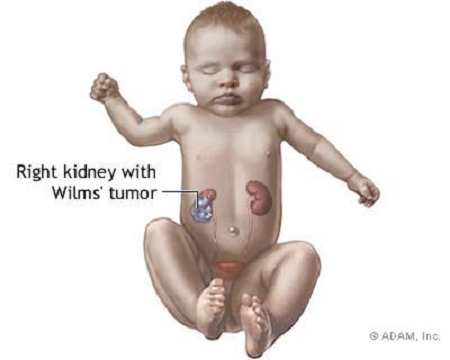
Wilms tumour - curable childhood cancer
Wilms tumour, a childhood cancer of the kidneys, is thought to be caused by alterations of genes responsible for normal development of the genitourinary systems.
Advertisement
Proof of this stems from observation that the tumour tends to occur in the presence of common abnormalities of the genitourinary system such as undescended testes, horseshoe kidneys and abnormal opening on the penile shaft called hypospadia.
Wilms tumour affects approximately 10 children and adolescents per 1 million population before age 15 years. Commonly, one kidney is usually affected but in about 5-10 per cent of patients, both kidneys are affected at the same time or one after the other.
Wilms tumour appears to be relatively more common in Africa and least common in East Asia. It is relatively more common in blacks than in whites.
It is more seen in females than males. The median age at diagnosis of Wilms tumour is approximately 3.5 years.
The most common manifestation of Wilms tumour is an asymptomatic abdominal swelling. The mass is usually painless and is usually felt accidentally by parents.
In about 80 per cent of cases, abdominal swelling is the presenting complaint.
However, less common symptoms include passage of bloody urine and infections along the pathway of voiding urine (urinary tract infections).
A few patients may bleed into their tumour and present with low blood pressure, anaemia, and fever. Rarely patients with advanced disease may present with respiratory symptoms related to spread to the lungs.
Unexplained weight loss with an abdominal mass is a big positive sign for this cancer. Examination by a doctor often reveals an abdominal mass large enough to be felt.
It is worth emphasising that once the mass is felt, parents should avoid frequent examination of it as it could lead to the rupture of a large tumour into other abdominal structures causing it to spread.
Once confirmed the doctor would look for other associations such as abnormalities of the eyes and abnormal opening of the penile shaft in males.
The following laboratory investigations are indicated in patients with Wilms tumour:
• Full blood count
• Chemistry profile - Including kidney function tests and liver function test
• Urinalysis, stool examination and lumbar puncture
• Coagulation studies and in the advanced worlds, cytogenetics studies
• Bone marrow examination
• Patients with suspected lung lesions will need chest radiography.
Renal ultrasonography is often the initial study, because it does not expose children to the detrimental effects of radiation.
Abdominal computed tomography (CT) scanning helps in determining the origin of the tumour as well as the spread of the disease.
Abdominal magnetic resonance imaging (MRI) is reportedly the most sensitive imaging modality for determination of spread into the large blood vessels.
Fortunately, this is one of the tumours that is completely curable, if seen early. Treatment is multidisciplinary. It involves a paediatric cancer specialist (oncologist), a paediatric surgeon as well as a radiotherapist.
Depending on the state, chemotherapy- using drugs to kill the cancer cells is done. This reduces the size of the tumour and makes it very easy for surgery to remove the affected kidney.
Chemotherapy is continued after the surgery after which radiotherapy is done to take care of those that have spread to distant sites. Approximately 80-90 per cent of children with a diagnosis of Wilms tumour survive with current multimodality therapy. This is in contrast to the rate 50 years ago, when only 10 per cent of children survived.
The addition of radiation therapy to surgery alone improved survival rates to approximately 40 per cent . With the use of chemotherapy, survival rates have doubled.
Surgery is done to remove the diseased kidney leaving the child with one functional kidney. In almost all patients, the remaining kidney can compensate and maintain adequate kidney function.
The most important way to survive this cancer is for it to be diagnosed early, treatment instituted early and the long follow up regime strictly adhered to.
Refreshingly, this cancer is easily treated daily at the cancer unit of the Childrens Block, Korle-bu Teaching Hospital. Success stories abound nationwide on this cancer type. The most important step is early reporting.



